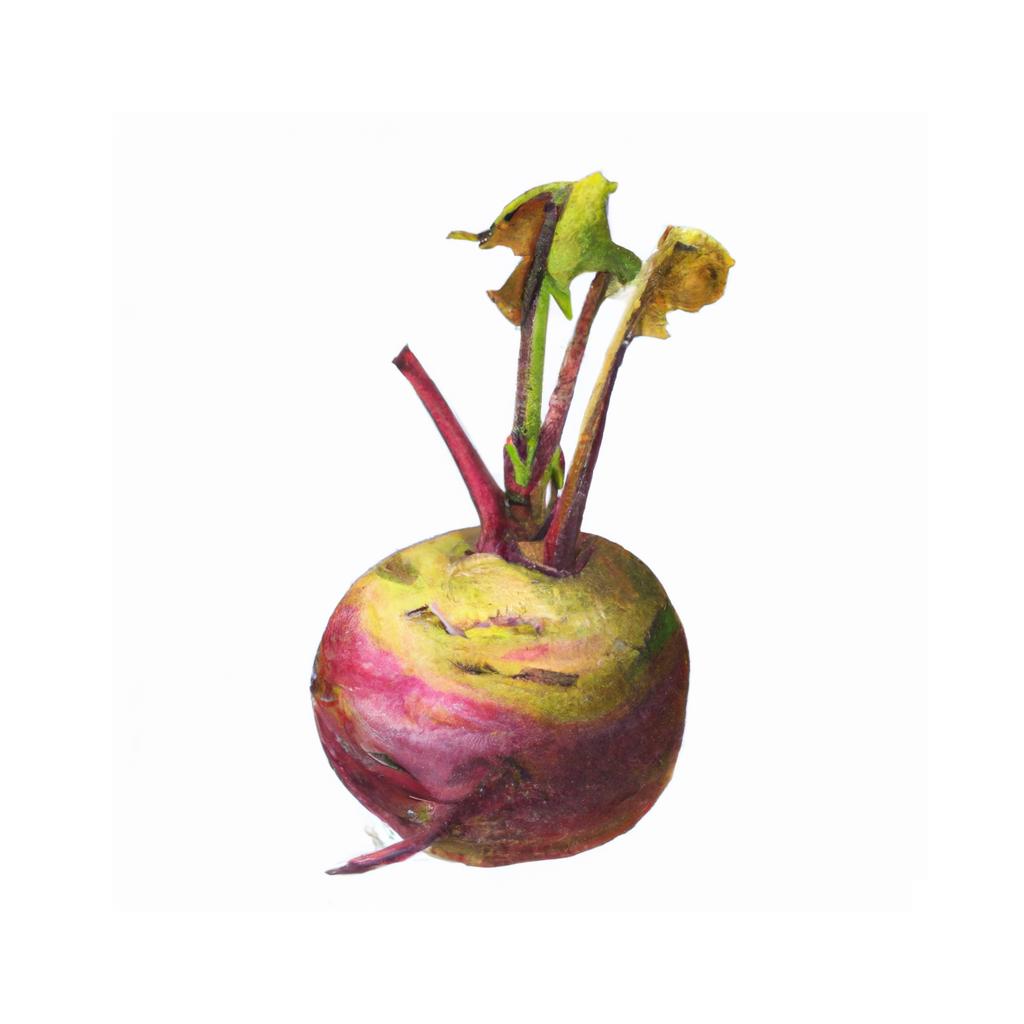
Swede, also known as rutabaga, is a root vegetable that is a cross between a turnip and a cabbage. Originating from Scandinavia or Eastern Europe, this nutritious vegetable has been cultivated since the 17th century. The name 'swede' comes from 'Swedish turnip,' which reflects its historical roots.
Swedes are an excellent source of nutrients, such as vitamin C, potassium, and manganese, while being low in calories. They have a mildly sweet and earthy flavor, making them ideal for various dishes. The flesh of swedes is golden-yellow to white, and they have a purple- or red-hued exterior, depending on the variety.
Swedes can be prepared in numerous ways, such as boiling, mashing, roasting, or sautéing. Traditional dishes featuring swedes include 'rotmos,' a Swedish mashed swedes and potatoes dish, and the Finnish 'lanttulaatikko,' a casserole that combines swede purée with breadcrumbs and spices topped with syrup. In addition, swedes are commonly used in soups, stews, or alongside roast meats.
Apart from culinary uses, swedes also have a cultural and historical significance. For example, in the British Isles, particularly Scotland and Ireland, swedes were historically carved into lanterns or 'neep lanterns' for Halloween, a tradition predating the use of pumpkins in America.
This is advice is most applicable to growers in the UK, you may need to adjust the timings if you live somewhere with a different climate and/or seasons.
| Month | Tasks | Advice |
|---|---|---|
| January | - | - |
| February | - | - |
| March | Sow seeds indoors, | Sow swede seeds indoors in trays or pots with well-draining compost, about 1cm deep. Keep the soil moist but not waterlogged. |
| April | Sow seeds outdoors, Thin seedlings, | Directly sow seeds outdoors in a sunny spot with fertile soil, about 1cm deep and 30cm apart. Thin seedlings to allow proper growth and avoid overcrowding. |
| May | Plant out seedlings, | Transplant indoor-sown seedlings outdoors, spacing them about 30cm apart in rows. Make sure the ground is well-watered before planting. |
| June | Hoe regularly, Water in dry spells, | Hoe around plants to keep weeds at bay and conserve moisture. Water in dry spells to encourage steady growth and to prevent splitting. |
| July | Earth up, Water if needed, | Earth up around the base of the plants to support and protect them from pests. Water during extended dry periods to help prevent the roots from splitting. |
| August | - | - |
| September | Begin harvesting, | Start harvesting when the swedes have reached a good size, generally around 10-12cm in diameter. Use a fork to lift them from the ground and remove the leaves. |
| October | Harvest, Store, | Continue harvesting swedes as needed. For storage, remove the foliage, clean them, and store in a cool, dark place like a shed or garage. |
| November | Finish harvesting, | Complete your swede harvest before the ground becomes too hard to dig. Store harvested swedes in a cool, dark place for use over winter months. |
| December | - | - |